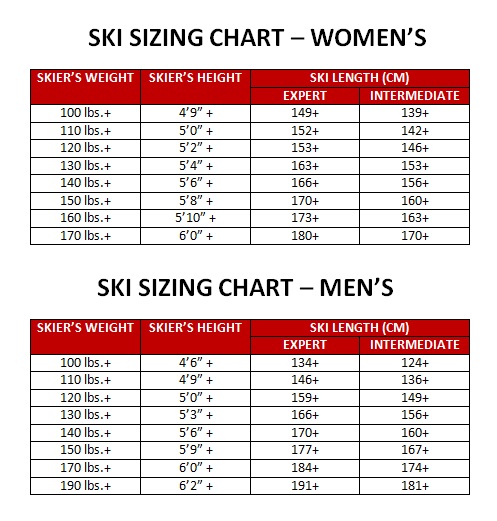Nailed It: Choosing the Right Water Ski Size
Finding the perfect pair of water skis can feel like navigating a choppy ocean. Too short, and you’ll be sinking faster than a lead weight. Too long, and you’ll be wrestling a lumbering behemoth across the water. So, how do you determine the right water ski size for your needs? This comprehensive guide will equip you with the knowledge to confidently select the perfect skis for an exhilarating ride.
Choosing the correct water ski length isn't a one-size-fits-all equation. It’s a complex interplay of factors including your weight, skill level, skiing style, and the type of ski you’re looking for – slalom, trick, or jump. Mastering the art of ski selection is crucial for maximizing your performance and enjoyment on the water.
The history of water skiing dates back to the early 20th century, with Ralph Samuelson often credited as the inventor. Originally, skis were crafted from long, solid planks of wood, a far cry from the high-tech composite constructions we see today. As the sport evolved, so did the equipment, leading to the development of specialized skis for different disciplines and varying skill levels. Determining the appropriate length became paramount as skiers sought to push the boundaries of performance.
Understanding the importance of proper water ski sizing is critical for both safety and performance. Using skis that are too small for your weight can lead to sinking and difficulty getting up, while skis that are too large can hinder maneuverability and control. The right size enables efficient planing, easier turns, and a more enjoyable overall experience. A poorly sized ski can significantly impact your progress and even lead to frustration.
There are general guidelines for water ski sizing based on weight, but these should be considered a starting point. For example, a beginner skier weighing 150 pounds might typically start with a ski around 67 inches, while a more advanced skier of the same weight might prefer a shorter ski for quicker turns. It’s crucial to remember these are just starting points. Consult size charts provided by manufacturers and, if possible, seek advice from experienced skiers or professionals at a pro shop. They can provide personalized recommendations based on your individual needs and goals.
Selecting the ideal water ski length goes beyond simply checking your weight against a chart. Factors such as your skiing style and the type of ski also play crucial roles. Slalom skiers often prefer shorter skis for increased maneuverability, while those focused on trick skiing or jumping might opt for longer skis for greater stability. Considering your skill level is equally important. Beginners generally benefit from longer, more stable skis, while advanced skiers may prefer shorter skis for greater agility and control.
Benefits of choosing the right water ski size:
1. Improved Performance: The correct size maximizes your ability to plane efficiently, turn with ease, and execute maneuvers effectively. For example, a slalom skier with the right size ski will experience less drag and greater control, allowing for tighter turns and improved overall performance.
2. Enhanced Safety: Properly sized skis contribute to better balance and control, reducing the risk of falls and injuries. A beginner skier with appropriately sized skis will find it easier to get up and maintain balance, leading to a safer and more enjoyable experience.
3. Increased Enjoyment: When you’re using the right equipment, you can focus on enjoying the ride rather than struggling to stay afloat or control your skis. This allows for a more relaxed and enjoyable experience on the water.
Advantages and Disadvantages of Different Water Ski Sizes
| Size | Advantages | Disadvantages |
|---|---|---|
| Shorter Skis | Increased maneuverability, quicker turns | Less stable, more challenging for beginners |
| Longer Skis | Increased stability, easier for beginners | Less maneuverable, slower turns |
Frequently Asked Questions:
1. What size water ski do I need for my weight? Consult manufacturer size charts and consider your skill level and skiing style.
2. What is the difference between slalom, trick, and jump skis? Each type is designed for a specific discipline, with variations in length, shape, and construction.
3. Can I use the same skis for all types of water skiing? While possible, specialized skis are recommended for optimal performance in each discipline.
4. How do I know if my skis are the right size? You should feel comfortable and in control, able to plane efficiently and execute turns without excessive effort.
5. Where can I find reliable water ski size charts? Most reputable water ski manufacturers provide size charts on their websites or in product catalogs.
6. Should I demo skis before buying them? Demoing is highly recommended, as it allows you to test different sizes and find the perfect fit for your individual needs.
7. What are the best water ski brands? Several reputable brands offer high-quality water skis, including Connelly, HO Sports, Radar, and O'Brien.
8. How do I maintain my water skis? Proper care and maintenance, including cleaning and storage, will prolong the life of your skis.
Choosing the right water ski size is fundamental to a successful and enjoyable water skiing experience. By understanding the factors that influence sizing, consulting resources like manufacturer charts and experienced skiers, and considering your individual needs and goals, you can confidently select the perfect pair of skis to maximize your performance and enjoyment on the water. Don’t underestimate the impact of correct sizing. Invest the time to find the perfect fit, and you’ll be rewarded with a smoother, more controlled, and ultimately more exhilarating ride. Get out there, conquer the wake, and experience the thrill of perfectly sized water skis!
Upper arm tattoos a comprehensive guide to your next ink
Beautiful spanish girl names a comprehensive guide
Unlocking early math skills a guide to kindergarten math word problem worksheets










